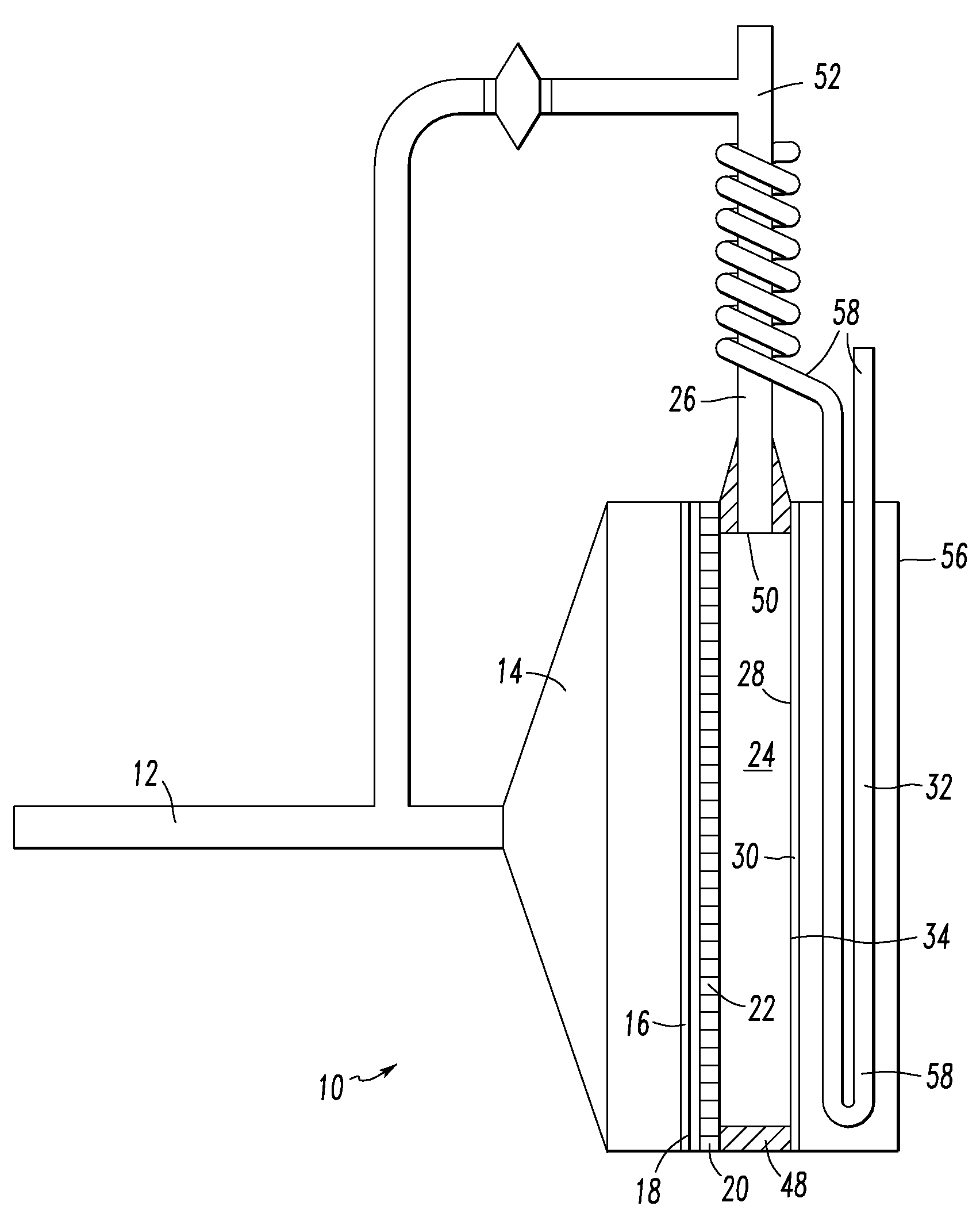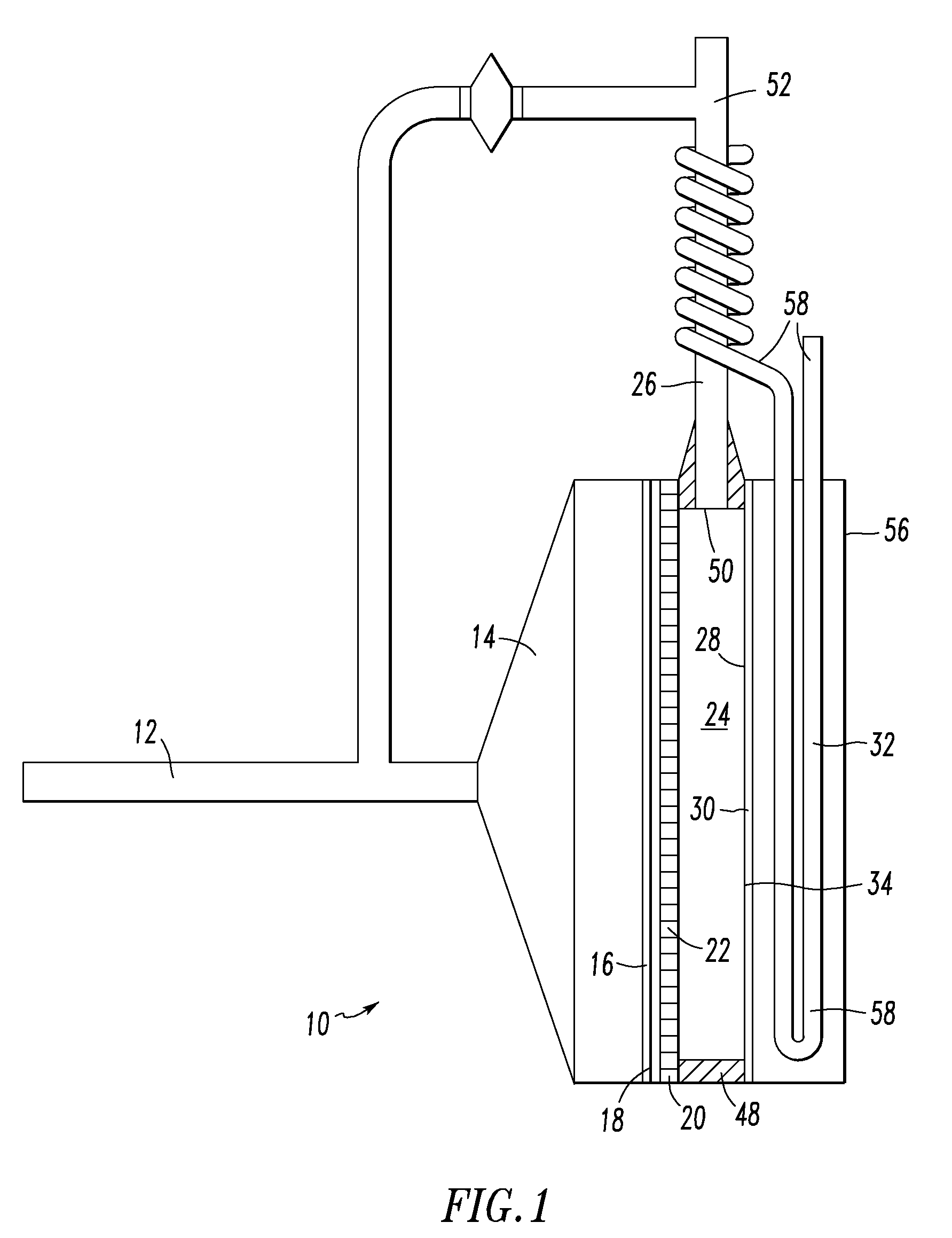Fusion Reactor
a fusion reactor and reactor technology, applied in nuclear reactors, nuclear engineering, greenhouse gas reduction, etc., can solve the problems of wasteful redistribution of kinetic energy, difficulty in producing fusion reactions at room temperature, particle collision likelihood, etc., and achieve the effect of increasing the likelihood of fusion reactions resulting from ion collisions
- Summary
- Abstract
- Description
- Claims
- Application Information
AI Technical Summary
Benefits of technology
Problems solved by technology
Method used
Image
Examples
Embodiment Construction
[0021]Referring to FIG. 1, a fusion reactor is illustrated. The fusion reactor 10 includes a gas inlet 12 for inserting deuterium gas into the system. The gas inlet 12 is connected to a funnel 14 that terminates in a positive electrode 16 at the wide exit 18 of the funnel 14. A columnating panel 20, which will be described in greater detail below, is disposed adjacent to the positive electrode 16. The exit face 22 of the columnating panel 20 is disposed next to a reduced pressure chamber 24, wherein pressure may be reduced by the vacuum system 26. The opposite side of the vacuum chamber 24 is formed by the target face 28 of the negative electrode 30. A heat transfer system 32 abuts the opposing face 34 of the negative electrode 30.
[0022]The positive electrode 16 is made from a deuterium-porous material, so that deuterium ions that are inserted into the system through the gas inlet 12 may pass through the positive electrode 16, and be accelerated towards the negative electrode 30 by ...
PUM
 Login to View More
Login to View More Abstract
Description
Claims
Application Information
 Login to View More
Login to View More - R&D
- Intellectual Property
- Life Sciences
- Materials
- Tech Scout
- Unparalleled Data Quality
- Higher Quality Content
- 60% Fewer Hallucinations
Browse by: Latest US Patents, China's latest patents, Technical Efficacy Thesaurus, Application Domain, Technology Topic, Popular Technical Reports.
© 2025 PatSnap. All rights reserved.Legal|Privacy policy|Modern Slavery Act Transparency Statement|Sitemap|About US| Contact US: help@patsnap.com



